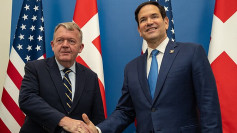Following Thursday's successful maiden commercial launch of its Falcon Heavy rocket and the landing of all three of this rocket's boosters, SpaceX is now prepping to launch 25 small satellites (or smallsats) in June.
The smallsats will be the payload of a mission designated USAF STP-2. Secondary payloads include the orbiters LightSail, GPIM, OTB (hosting the Deep Space Atomic Clock, six COSMIC-2, Oculus-ASR, Prox-1, and ISAT. Other secondary payloads include LightSail 2 carried by the Prox-1 nanosatellite, Oculus-ASR nanosatellite, GPIM, and the Deep Space Atomic Clock.
COSMIC-2 is a cluster of six satellites whose primary role is to provide radio occultation data. The mission will support the U.S. Air Force EELV certification process for Falcon Heavy. STP-2 will be the first Falcon Heavy mission for the Department of Defense.
Morale still runs high at SpaceX following the successful launch of Arabsat-6A on April 11. Falcon Heavy lifted off at 6:35 p.m. EDT from the Cape Canaveral Air Force Station. The two strap-on solid fuel cores separated from the main core after a few minutes to land side-by-side at SpaceX's Landing Zones 1 and 2 at Cape Canaveral.
The main core then made a perfect landing on the SpaceX drone ship, "Of Course I Still Love You," floating on the Atlantic Ocean. All three reusable boosters are Falcon Block 9 cores.
Falcon Heavy's payload, the Saudi Arabian Arabsat-6A communications satellite, detached in the desired orbit thereby qualifying the mission as a success. From its geostationary orbit, Arabsat-6A will provide TV, internet, telephone, and secure communications to customers in the Middle East, Africa, and Europe.
The satellite was built on a modernized version of Lockheed Martin's A2100 bus with advanced innovations, including propulsion, solar arrays, and electronics. It's designed for 15-year service life and was manufactured in Denver, Colorado.
Thursday's launch was the second for Falcon Heavy following its successful maiden flight on Feb. 6, 2018. Its payload was the personal red-colored Tesla Roadster of Elon Musk. The Roadster and its dummy space-suited pilot named "Starman" is now headed for the asteroid belt.
During Falcon Heavy's maiden flight in 2018, its two booster cores made synchronized landings side-by-side in Florida. The main booster, however, missed landing on one of SpaceX's drone ships, and instead splashed into the ocean.






